We Asked an Expert From The Home Depot How to Prevent Home Fires This Holiday Season

Our editors independently select the products we recommend. We may earn a commission on items bought through our links.
There are many ways for a family holiday gathering to be swiftly ruined. These include, but are not limited to, an impromptu heated political argument, a bad Christmas gift or an accidental fire. Many of our most beloved holiday traditions — lighting candles, donning a dried-out pine tree with lights, cooking a giant family feast with ovens and stovetops — create prime opportunities for fires to break out at home and could present a real danger if the right precautions aren’t taken.
Today's Top Deals
Get The Echo Dot and Amazon Basics Smart Color Bulb Bundle For Just $15
Brave The Elements With This Rechargeable Hand Warmer, 20% Off
In the winter season of space heaters, lit fireplaces and dry air we could all use a reminder of what to do to prevent fires and what to have on hand in case one does spark. Everyone knows to have a trustworthy fire extinguisher somewhere close by, and frequently check your smoke detectors to make sure they’re operating properly — but is there anything else you should be doing?
Instead of risk char on anything besides holiday cookies, we decided to ask Alex Forte, a Fire Safety Expert for The Home Depot for his top fire safety tips for the holidays and winter at large. Here are a few steps all homeowners and apartment-dwellers can employ to keep themselves, their belongings and families safe during colder months.
Read More: The Best Fire Safety Equipment From Kidde, Sold at The Home Depot
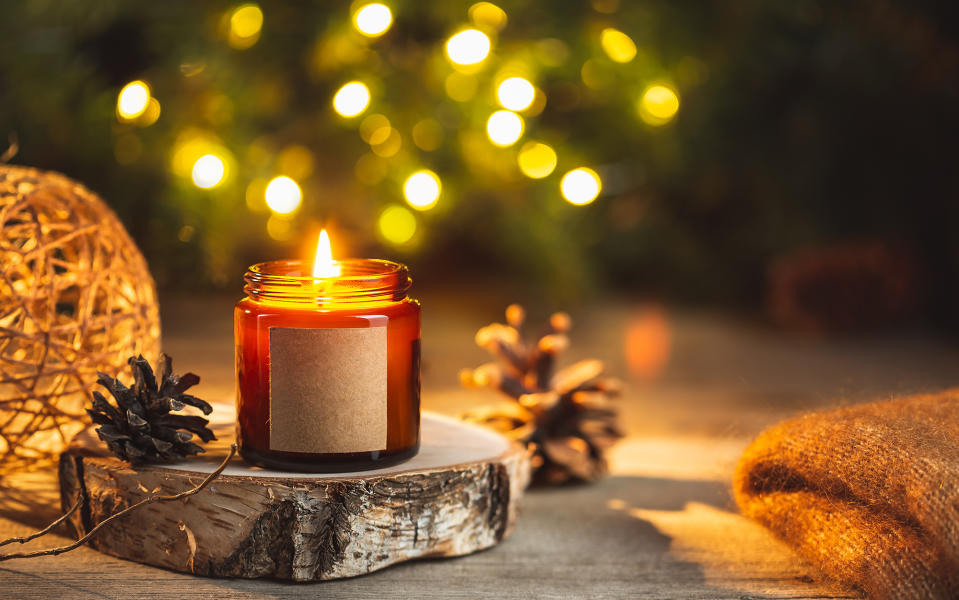
1. Keep Your Eye on Anything Lit
Whether it’s a lit candle, your cozy fireplace or a space heater warming up the living room — avoid leaving any live heat source unattended. And it hopefully goes without saying, but please don’t dispose of your Christmas tree by burning it in your fireplace.
Candles
“Christmas is the peak day for candle fires,” said Forte. “Always place lit candles far away from anything that could ignite if the candle is accidentally knocked over, and don’t forget to blow them out when leaving the room.”
Christmas Tree Lights
“Many people don’t know this but nearly one in five Christmas tree fires are started by decorative lights,” said Forte. “To prevent, make sure to replace any string of lights with broken cords or loose bulb connections, and always turn the lights off before leaving the house or going to bed.”
He went on to say “For all the live Christmas tree fans – remember to add water to your tree stand every day. As Christmas trees dry out, they become more and more flammable,” said Forte. He also noted you should be proactive in getting rid of your tree after Christmas is over.
“Looking ahead, be sure to get rid of your tree after Christmas. It should not be left in the garage or leaned up against the home.”
For those who prefer an artificial tree, Forte mentioned that a flame retardant one is the safest way to go, and recommended this Cedarburg Fir from The Home Depot.
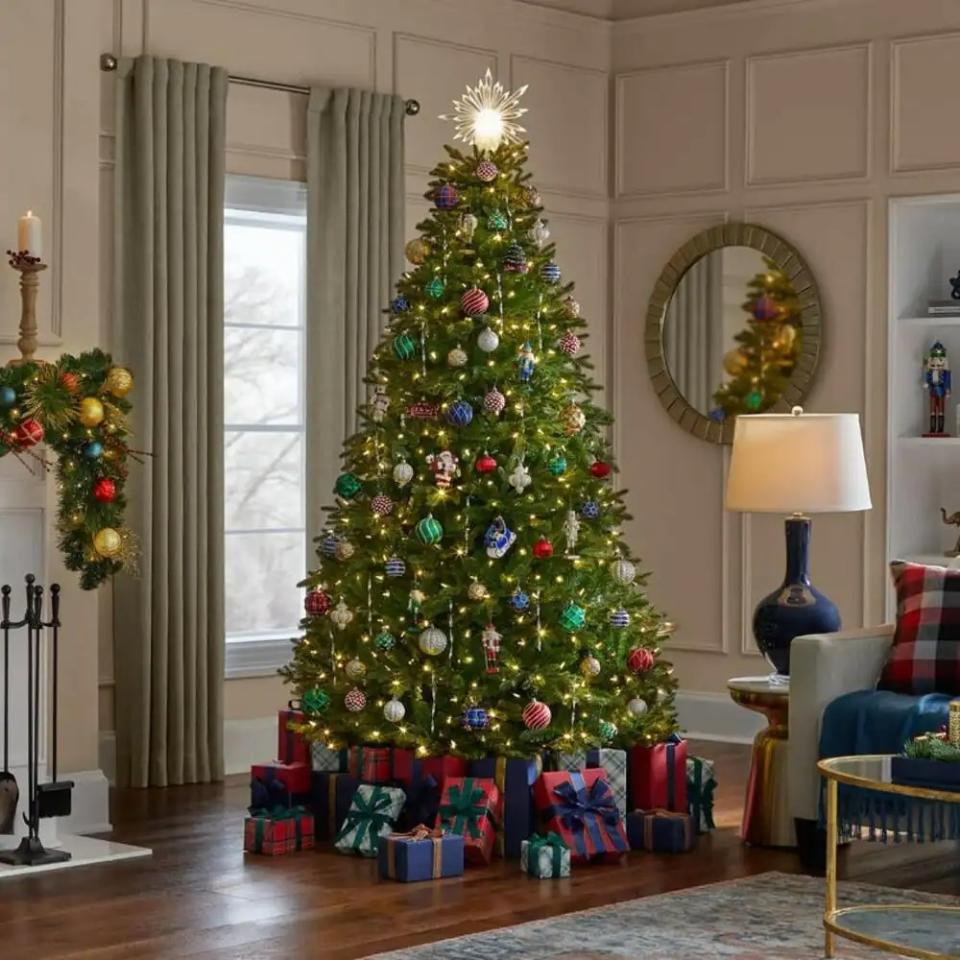
Home Accents Holiday 7.5 ft Cedarburg Fir Christmas Tree
Buy Now
This 7.5 foot tree is made with over 3,000 fire retardant branch tips and is prelit with 500 LEDs that add a festive sparkle. It’s made with fire-resistant materials and includes a remote for seamless use.
Space Heaters
“Space heaters are another great way to keep warm during the colder seasons, but a very common mistake when dealing with space heaters is placing them too close to flammable materials such as bedspreads, draperies or clothing,” said Forte. “They need at least three feet of clearance from anything that can burn.”
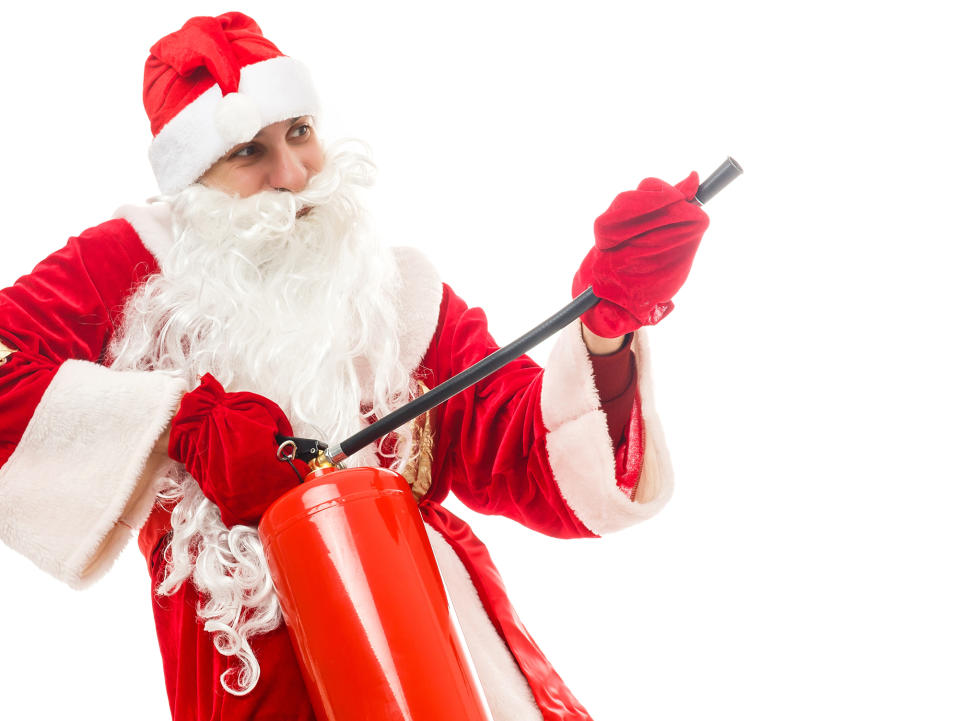
2. Be Mindful in the Kitchen
Forte also mentioned that the kitchen is another hotspot for fires during the holiday season when meals are being cooked and lots of people are gathered.
“The leading cause for fires in the kitchen is unattended cooking so be sure to never leave a hot cooking surface operating unattended and keep a fire extinguisher in the kitchen,” said Forte.
“Move your wooden utensils, dish towels, cookbooks and other combustible materials away from the stove to lower the risk to your damage (and keep Grandma’s top secret cookie recipe safe).”
Fire Extinguishers Are Key
He added that in addition to being a general best practice for fire safety, a fire extinguisher “can be lifesaving when water cannot put out a fire, as is the case with most kitchen fires.”
He noted that this Kidde model is the one he recommends for keeping nearby while you’re cooking so “you don’t have to reach over flames if you need it.”
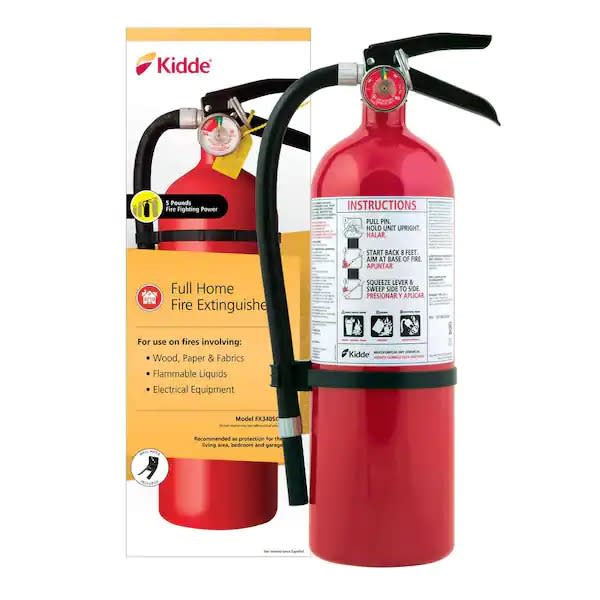
Kidde Full Home Fire Extinguisher with Hose
Buy Now
This fire extinguisher from Kidde is ABC-rated for common fire sources including combustibles, electrical fires and liquid fires. It has a 12-18 foot discharge distance and a 13-second discharge time, so you can reach a safe distance from the fire to extinguish it at home.
In addition to having the fire extinguisher, regularly tending to it and making sure it’s ready in case of an emergency is also key.
“Check the gauge monthly to make sure it is pressurized. The gauge should appear somewhere in the green zone, which signifies it is ready for use. Make sure the pull pin is secured and that there are no cracks, dents or rust spots present on the canister,” said Forte.
3. Double Check Your Alarms
He also reiterated that “Every home should have smoke alarms and carbon monoxide (CO) alarms.”
He noted that smoke alarms are every home’s “first line of defense” as they “quickly alert your family to smoke or fire danger by sounding an alarm.”
“Install smoke alarms in a central location, outside bedrooms and sleeping areas and on every level of your home,” said Forte. “CO monitors should also be installed in bedrooms and on each level of the home.”
In terms of what to buy, Forte recommends Kidde smoke alarms because they’re “committed to producing the technology that saves lives.”
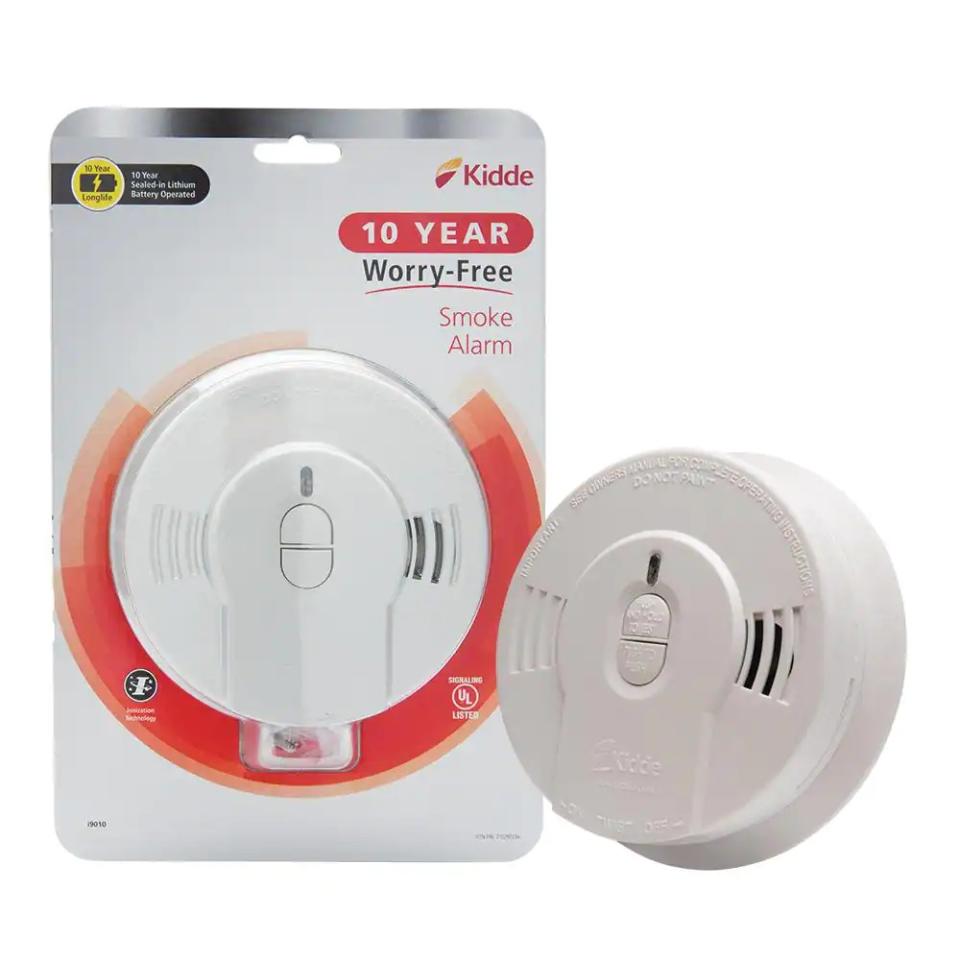
Kidde 10-Year Worry-Free Smoke Alarm
Buy Now
This smoke alarm from Kidde is equipped with 10 years of battery life and a tamper-resistant design. It has ionization technology for detecting small fire particles before the blaze has grown and spread. It’s also made to provide protection during power outages and doesn’t have low-battery chirps.
He added that carbon monoxide alarms are just as important as smoke alarms, “Since Carbon monoxide (CO) is a colorless, odorless gas, it can’t be seen or smelled – that’s what makes it such a danger.”
Kidde also has a lineup of alarms for detecting carbon monoxide within the home that sound clear messages when a threat is present.
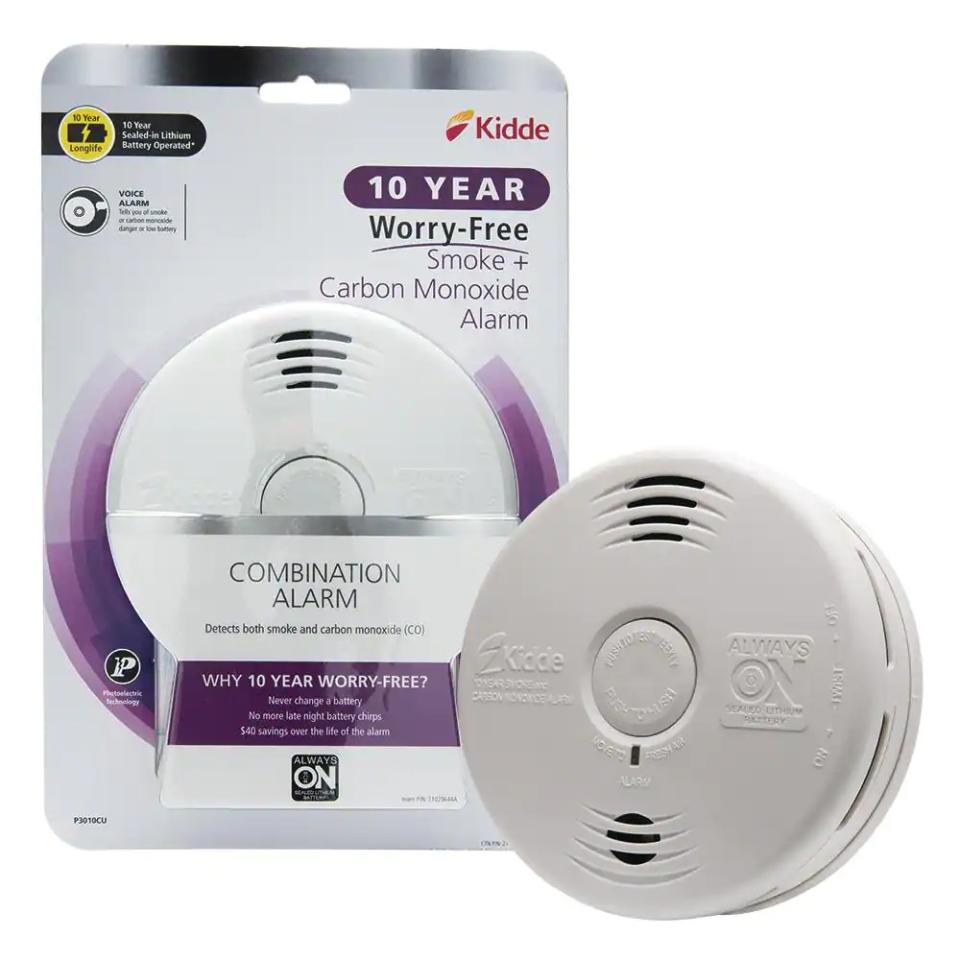
Kidde 10-Year Worry-Free Smoke & Carbon Monoxide Detector
This dual smoke and CO alarm is built to detect invisible fire particles and carbon monoxide gas even during a power outage. “The voice warning function will verbally announce “fire” or “warning carbon monoxide” when either is detected,” said Forte.
When To Test and Change Out Your Fire Alarms
“Be sure to check your smoke detectors, carbon monoxide alarms and fire extinguishers every six months to ensure they are up to date and in good working order,” said Forte, a step that’s easy to forget after you’re purchased the necessary precautionary items.
The total shelf life for these devices? About 10 years.
“Change out fire safety devices every 10 years. The entire device needs to be replaced, not just the battery. If unsure of the age of a smoke alarm, it’s safest to replace it,” said Forte.
4. Have an Escape Plan in Place and Practice
Forte ended by urging every family to establish a fire escape plan in case of an emergency and taking steps so everyone is on the same page in case of an emergency.
“It’s important to have a plan in place to keep you and your loved ones safe. Establishing a family fire escape plan will encourage everyone to remember a safe meeting spot outside of your home,” said Forte.
“You and your family should practice a fire escape plan twice a year. Everyone should know how to get out and where to go in case of a fire.”
He also pointed out that children may not be familiar with the sound of a fire alarm or what to do in case of one.
“Practice fire drills together and make sure children know what the smoke alarm sounds like and what to do when they hear one.”
More Top Deals from SPY
Best of SPY
10 College Dorm Room Closet Organization Hacks To Make the Most of Your Limited Space
These Mattress Protectors Will Add Years to Your Bed's Life, Trust Us
Upgrade Your Daily Shower With These Replacement Shower Heads
Click here to see more up-to-date holiday deals!

